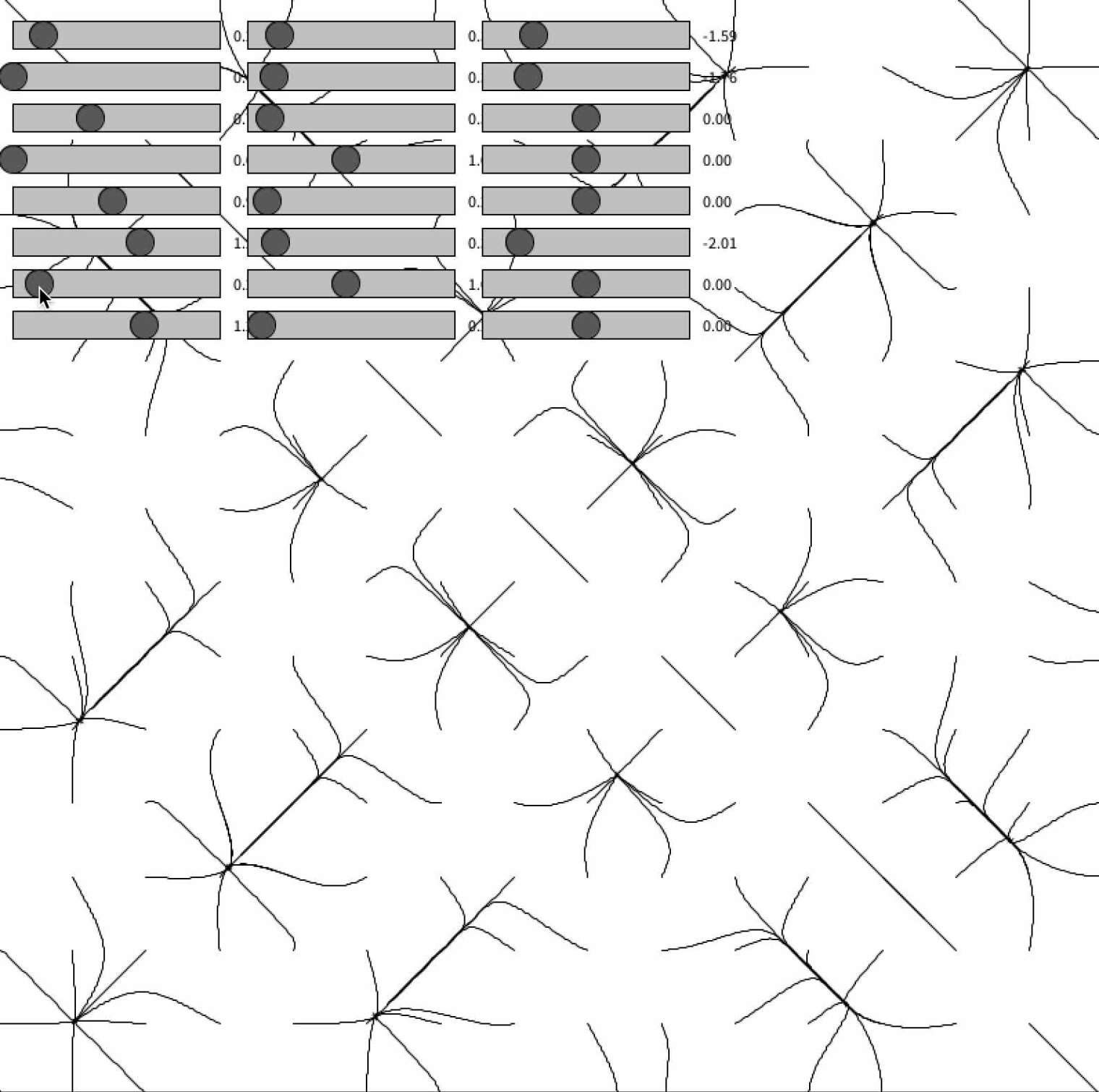Try to focus your attention on the exact center of your visual field right now. Notice how the seemingly straightforward task reveals systematic instabilities: wavering, drifting, and transforming in characteristic ways. These effects aren’t random noise; they suggest an underlying physical mechanism that shapes how attention behaves more broadly.
I’ve been developing a model at QRI that conceptualizes attention through electromagnetic field dynamics. To visualize this, I created a simulation showing how electric field lines emerge from weighted combinations of resonant modes in a square plate. In this video, I manipulate the relative weight, temporal frequency, and phase of these resonant modes:

The story of harmonic waves in the brain is getting more interesting by the day. Building on Lehar’s early insights(Lehar 1999), Atasoy’s work on connectome-specific harmonic waves(Atasoy, Donnelly, and Pearson 2016), Johnson’s[explorations of the implications(Johnson 2018), Luppi’s contrast between anesthetics and psychedelics(al. 2022), and more, we’ve now seen stunning confirmation of these ideas in Joana Cabral’s recent work with single-slice rodent recordings(Cabral 2023). The evidence keeps pointing to harmonic resonance as a fundamental organizing principle of neural activity. So let’s take this seriously and see what it tells us about the strangeness of attention.
Think of the “control parameters” for attention as the precise timing, weighting, and phase relationships between different electric resonant modes. We seem to have some degree of volitional control over these parameters, though this control is inherently indirect.

The resulting electric field lines may correspond to what we experience as the “flow of attention.” This explains why we cannot directly command attention to go anywhere. Instead, we can only modulate the underlying oscillatory conditions to maintain charge density in particular regions. To actually keep the charge density having a specific shape requires finding the right combination of harmonic modes together with the right rhythm to keep them active.
This framework might give us a new map of psychedelic phenomenology. Classical psychedelics like LSD and psilocybin seem to disrupt normal resonant mode configurations by activating higher frequency harmonics and lowering the power on low frequency harmonics. Ever notice how psychedelic experiences feel distinctly “sprinkly”? That’s what happens when attention field lines fluctuate chaotically as high frequency harmonics create (Gómez-Emilsson 2020). Without a “base”, DMT induces rapid shifts between field line configurations. In contrast, 5-MeO-DMT activating the “global mode” (Gómez-Emilsson 2023) might lead to intense single-pointed attention. Look at the simulation when perturbed: the patterns show deep qualitative similarities with how attention behaves in these states.
The experimental implications are really tantalizing: we should expect to see coordinated changes in electromagnetic field patterns corresponding to shifts in attention in predictable ways. These patterns should show characteristic resonant modes that maintain stability during focused attention and become disrupted during distraction or altered states. Modern MEG and high-density EEG setups in combination could test these predictions.
Modeling attention field lines explicitly might even point us toward better cyberdelic interventions: we can build systems for non-invasively inducing exotic states of consciousness by identifying the ways attention is phase-locked and figuring out how to perturb it (ideally in a pleasant way!). It’s notoriously difficult to jump straight to Samadhi by focusing on a point. But what if we could first simulate quasi-coherent combinations of resonant modes, phase lock with the current attentional mode, and then gently nudge it toward high concentration?
Attention in this view wouldn’t be a “spotlight.” Or at least, that would not be its essential nature. Although it can, at times, behave as if it were a spotlight, this is just one mode among many. Instead, attention would be a dynamic pattern in the brain’s electromagnetic field, where field lines converge, shaped by sophisticated control systems that modulate underlying resonant modes. Watch the simulation again: can you see how small parameter changes create recognizable patterns in the field lines? Those patterns might map directly to familiar attentional transitions. The way the lines flow, break, and reform under parameter changes could explain both the controllable and uncontrollable aspects of attention we all experience. Perhaps we will develop words to name them; and as a result, learn to eff the ineffable.
It’s a work in progress, but I figured I’d share 🙂